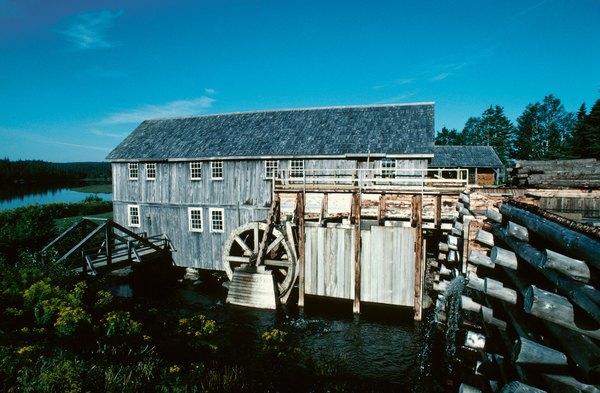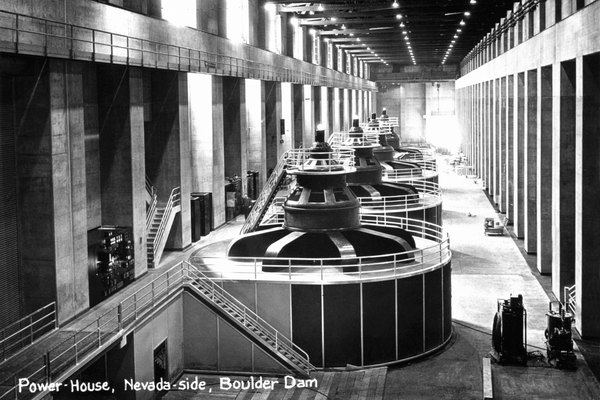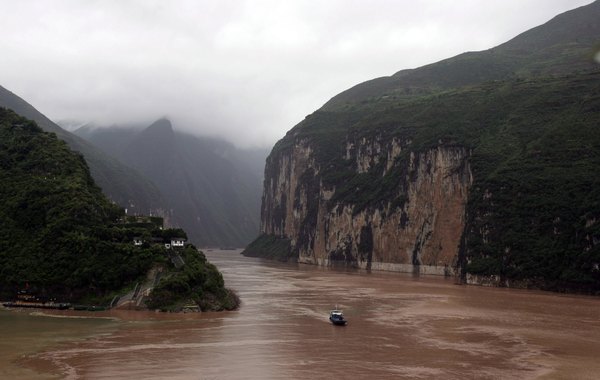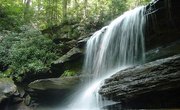
Hydropower is energy that derives from the movement of water. This movement is part of the Earth’s water cycle, which is the continuous circulation of water through the ground, oceans and atmosphere. The amount of energy that moving water provides depends on the volume in motion, and its speed. Water is one of the oldest sources of energy. Ancient civilizations used hydropower for irrigation, and as a grinding mechanism for grain. In the modern period, hydropower provides 20 percent of the world’s renewable energy.
Water Wheel

Water wheels were the most common form of hydropower, from over 4,000 years ago through the 19th century. They converted the energy of flowing water into a rotary motion. This motion then powered the movement of stones and levers to grind grain, mineral ore and cut lumber. The wheel lay horizontally or vertically in flowing water, such as a river or stream. Water flow forced the wheel to move when it hit paddles attached to the wheel’s external frame. Water power increased as it flowed through narrow channels or nozzles.
Turbines

Water turbines are a development from the water wheel, and precursors of modern electricity generation. Rather than hitting a fixed paddle on a wheel, the water flow activates a spinning rotor that can have hundreds of blades. A shaft attached the rotor links to a turbogenerator, which is a giant magnet with a coiled wire inside of it. An electric current is generated in the turbine as the shaft turns.
Dams

Dams impound large volumes of water that flow from rivers, and create a reservoir behind a retaining wall. A penstock is the pipe, or sluice gate, from the bottom of the reservoir, passing through the dam, to a water turbine. Water from the reservoir flows at high pressure from the reservoir to the turbine and generates electricity. The Three Gorges Dam on the Yangtze river in China is the world’s largest hydroelectric installation where water flow powers 32 turbines.
Pumped Storage
Hydropower plant operators can store energy during periods of low customer electricity demand, and release it during periods of peak demand, using pump storage methods. During periods of low demand, water that has already flowed through turbines is pumped back to a separate storage reservoir above the turbines. This water flows back through the turbines during periods of peak demand. The system provides a quick start-up for extra power generation.
References
About the Author
Based in London, Maria Kielmas worked in earthquake engineering and international petroleum exploration before entering journalism in 1986. She has written for the "Financial Times," "Barron's," "Christian Science Monitor," and "Rheinischer Merkur" as well as specialist publications on the energy and financial industries and the European, Middle Eastern, African, Asian and Latin American regions. She has a Bachelor of Science in physics and geology from Manchester University and a Master of Science in marine geotechnics from the University of Wales School of Ocean Sciences.
Photo Credits
Photos.com/Photos.com/Getty Images
